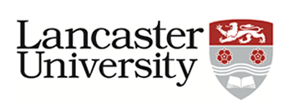化学工程专业解析
化学工程,简称化工,是研究以化学工业为代表以及其他过程工业(例如石油炼制、冶金、食品及印染工业等)生产过程中有关化学过程与物理过程的一般原理和规律,并且应用这些规律来解决过程及装置的开发、设计、操作及改善问题的工程技术学科。目前全球前10强企业中有6家企业涉足化工行业。
中国和美国化学工程差别?
中国化工专业:
本科学习阶段更加重视理论的记忆,但是对于理论的本质不做研究,或者没有机会做研究。比如国内化工学生言必称“三传一反”但是对于三传一反的本质,以及三传一反”(三传一反:热量传递,动量传递,质量传递和化学反应过程)的数学偏微分方程的是不做过多了解的,这会导致无法深刻理解理论。多培养炼油、石油化工及相关化工领域人才。(中国石油大学)属于我国极少数进入世界一流的学科。其中QS世界大学专业排名中,清华大学化工名列全球12,属于中国weiyi。国内目前大约有26000家大中化工企业,提供了约707万就业岗位。
美国化工专业:
本科阶段除了基础课程的学习,更加注重化学基本原理和本质的学习,所以对于理论基础研究的比国内更加深入。美国的化工本科会学习到“三传一反”的数学偏微分方程,也会学习到它们的数学偏微分方程形式一致,基本原理一致,而在中国的化工本科教学中大多不会涉及。
常见学位及要求
Master of Science in Chemical Engineering
时长:1-2年 (28-40学分)
特点:培养学生掌握化学工程,工艺的知识,掌握化学装置用法及设计方法,同时在交叉学科内进行探索、改进、开发和设计新的方案。
Thesis: 学术导向
Non-thesis:职业导向
Master of Engineering in Chemical Engineering
时长:1-2年 (28-40学分)
职业导向,工程导向,关注技术和应用层面,指向就业,更加侧重于实践(南加大ME需要特点:完成MS课程要求且通过工程师考试)
PhD-Chemical Engineering
时长:5年 一般90学分左右
特点:学术研究导向,毕业后academic或industry都可以
USNEWS 给出开设化工专业的学校有110 所左右,其中有专排的90 所,虽然没有化学专业选择多,但是总体也是有相当数量的学校可供选择。绝大多数学校也是有单独的化工专业,少数学校是和生物,生化结合的项目,比如Chemical and Biological Engineering(爱荷华大学)和Chemical and Biochemical Engineering(加州大学尔湾分校)。在开设化工的学校项目中有接近90%都开设硕士学位,接近30%学校只开设硕士,剩余大约10%学校只开设博士学位。这点源于化工有工科的属性,偏应用。
1. 3 常见化工分支
1.3.1 Catalysis and Reactions 催化和反应
Understanding chemical reactions, developing better catalysts, and engineering reacting systems is a core component of chemical engineering. Research in this increasingly significant area includes biomass conversion to fuels and chemicals, electrochemical reactions, plasma chemistry, petroleum production, biochemical engineering, environmental catalysis, fuel cells, CO2 capture and conversion. We employ computational, experimental and modeling approaches, often in concert, to solve pressing societal problems.
1.3.2 Biomolecular Engineering生物分子工程
Biomolecular engineering takes a molecular-level approach to provide new capabilities and solve problems in the life sciences. For example, chemical engineers are developing lab-on-a-chip devices to do genetic analysis and biomolecule synthesis. We are improving drug delivery and medical imaging by studying how molecules move and distribute throughout the body. We are also studying how proteins interact with DNA and how ligand molecules interact with cellular receptors.
1.3.3 Cellular Engineering细胞工程
From using T-cells to fight cancer to using microbes to produce biofuels, cellular engineering is a growing area of chemical engineering research. Our department is also uncovering new cellular-level information – for example, how cellular signaling occurs or how cancer cells travel through the bloodstream – that can be used to fight diseases. This new knowledge can also be used in tissue engineering.
1.3.4 Computing and Simulation计算和模拟
Many research groups in our department use advanced scientific computing and molecular simulation as tools for elucidating chemical, physical and biological fundamentals. For example, we are examining the formation and fate of nanoparticles in the environment, chemical reactions occurring on catalyst surfaces, cellular signaling, polymer rheology, low temperature plasmas and nano-scale self assembly of particles with different geometries.
1.3.5 Nanotechnology纳米科技
With our long history in heterogeneous catalysis and surface science, Michigan chemical engineers have been using nanotechnology well before it became a buzzword. New tools allow even better control of nanoparticle growth, shape and properties – and better characterization of the final products. We are developing nanotubes, nanoprobes, nanomaterials, nanocatalysts and nanostructures for a variety of applications in energy conversion, medicine and electronics, for example. Our faculty and students apply both state-of-the-art experimental techniques and sophisticated computational approaches.
1.3.6 Materials 材料
New catalysts for biomass conversion, new sorbents for CO2 capture or H2 storage, self assembly of nanoscale building blocks to make new materials, new biomaterials for medical devices, new electrode materials for batteries and new membranes are among the topics being explored in the Chemical Engineering Department. We develop and employ both computational and experimental approaches.
1.3.7 Polymers and Complex Fluids 高分子聚合物和复杂流体
Polymers are ubiquitous in modern life, as are complex fluids – soft materials with properties between those of liquids and solids. Researchers in the Chemical Engineering Department are developing polymer films for use in energy conversion, new polymers for flexible solar cells, membranes and medical devices, and polymer coatings that change properties when exposed to stimuli. The research in this area includes rheology studies, molecular simulation, colloid self-assembly, gelation and percolation.
1.3.8 Sustainable Energy 可持续能源
From energy-harvesting textiles to better batteries and solar cells, the Chemical Engineering Department is doing the research that will enable increased use of renewable energy sources. For example, we are working on new thermochemical and biochemical pathways to renewable liquid biofuels and also examining how they perform in an engine. We are making new materials for hydrogen storage and for electrocatalysis. We are also doing fundamental and applied research related to electrochemical systems for energy storage and energy conversion.
1.3.9 Product and Process Systems Engineering产品和过程系统工程
The primary objective is to develop computational methodologies and tools to assist the process and related industries involving change at a molecular level to develop and to optimise system performance, and make better use of resources in a safe and sustainable manner. Our core competencies lie in modelling and model solution tools, process operations and control, product and process design and scientific computation. General methodologies are being developed based on advances in modelling tools, optimisation techniques, non-linear analysis, data analysis and visualisation.













